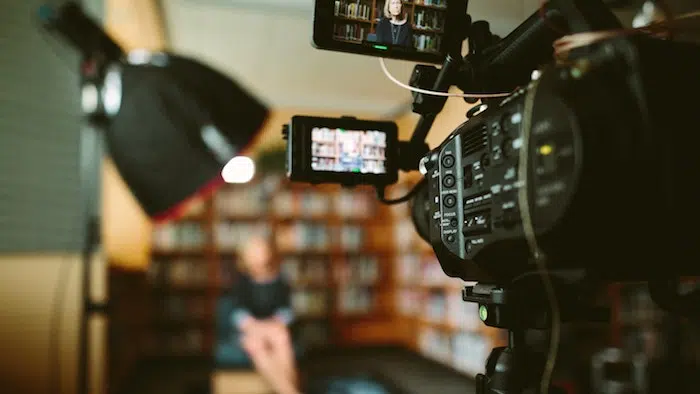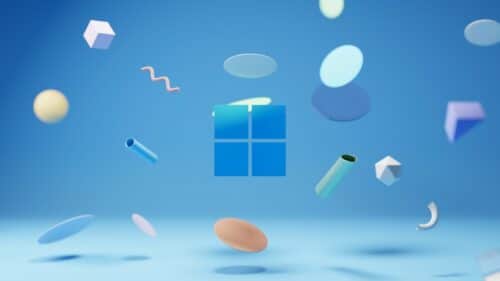Testimonial videos are videos that help promote your brand by sharing the real experience of clients or customers. Because these videos feature real customers, they convey a trustworthiness and authenticity that no standard commercial can match.
Customer testimonials work because they provide social proof that your product or service is worth investing in. They go beyond the sales pitch to provide first-hand accounts of success in action. It’s no longer selling — it’s real life.
2 Styles of Testimonial Video
There are two ways to make videos that showcase impactful testimonials on your website. The first is the classic way, by sending a camera crew to the customer’s location, or inviting them into a studio to give their review. The second takes advantage of modern technology to create a testimonial that feels organic and authentic, if a little less polished. We’ll walk you through both versions and why you might choose one over the other.
Classic Style Customer Testimonial Videos
Interviewing a client about their experience with a brand is the core of any classic style testimonial video. Here’s an example in which Interos asks a representative from Accenture to explain how the two companies work together. This fairly straightforward style relies on a customer interview supplemented with B-roll and stock footage. It may not be the most engaging video in the world, but it gets the message across and looks professional.
But the classic customer testimonial style can do a lot more. It gives you the creative control to create a compelling story by adding additional elements.
In the testimonial video below, Instacart explains why they use Confluent, but this is more than a talking head video. The creators combined customer interviews with B-roll, animated elements, and even news clips to offer a cinematic experience for viewers.
Classic style videos are best for when professionalism and polish are essential. These videos are often best for B2B marketing because they offer the brand maximum control. The production value reassures customers of the quality of the product.
This style of video performs best on YouTube and on television or streaming services. On social media, it might stand out as too polished. Which is part of why the second style has become more popular in the last few years.
Organic Style Testimonial Videos
Organic style testimonial videos use whatever technology the customer has on hand to create a testimonial that feels organic and authentic. The client might record the video on their smartphone and send it to the brand for editing and production, or the brand could pull content from Zoom and social media, with creator permission of course.
The production quality may be lower on these types of videos, but they mimic popular social media videos and influencer content. As a result, these organic style videos fit seamlessly onto platforms like TikTok, where too much polish can cause users to skip your content. This is true even if the video isn’t really all that organic. Videos featuring influencers are really just testimonial videos with a little more polish.
Organic-style videos are most often used in B2C marketing, although that’s not a hard-and-fast rule. This less formal, less polished style feels authentic and personal in a way that consumers can relate to.
Choose The Right Customer Partner
Not all your clients are going to be the best fit for getting in front of a camera. You want to choose someone who is open to the idea, has a story to tell and can present themselves well. Here are a few factors to consider before you approach a customer for a testimonial:
- A clear narrative – Look for customers with success stories that include a compelling problem with your product as a solution.
- Strength of relationship – You want to work with a client that knows your brand well and can speak with knowledge and authenticity.
- Mutual benefit – Consider how the video can help everyone involved. For example, in the classic style videos above, the company giving the testimonial gets what amounts to free advertising for their business.
- Existing audience – Companies or executives that are industry leaders have a larger influence. Creators who are already influencers in their space also bring a ready-made audience for your video.
Once you’ve identified a few clients you’d like to interview, it’s time to approach them and make the ask.
How to Convince Customers to Provide Testimonials
Many B2C customers are happy to do testimonials for fun or exposure on a social media platform. Others will appreciate a discount or free product in exchange for their testimonial. Just make sure you disclose these incentives in the final video.
When working with B2B customers, it can be a little more difficult to convince them to participate. Recording a testimonial video takes time and energy your customer could be spending on their business. It’s important to show them the value they could gain by participating.
Highlight opportunities for cross-promotion, like placement in your newsletter, on your website, and through social media channels. You might choose to offer a discount or other incentives. One valuable offer might be to capture some video for them while you’re on-site. Since you already have a film crew set up, you can easily capture footage for their next commercial or training video.
When working with other brands, getting approvals can be the toughest hurdle. Some companies, especially larger brands, or brands in regulated industries like healthcare or finance, may require several rounds of approvals or a legal review before they can green light a video project. Work with your client partner to understand their needs.
Prepare the Customer For the Video
Make sure the customer representatives you’re interviewing are comfortable on camera, and are prepared well ahead of the shoot. Before the interview, offer some preparation materials. This might include:
- A breakdown or storyboard of the video
- Interview questions
- Suggestions on hair, wardrobe and makeup
- How long the shoot will take
Ask them to aim for interview responses that are short and clear. These can more easily be edited into the soundbites you need. You may even want to do a rehearsal run to get them comfortable with the interview questions.
If the customer is planning to send a self-recorded video, you can still offer advice on talking points, wardrobe, lightning, and sound quality. Many customers will appreciate the guidance and it can result in a better video.
Considerations for Recording On-location
Don Forschmidt, a video director for IdeaRocket says that clients often don’t realize the scope of time, personnel, and equipment needed for an in-person shoot. The following considerations can help you prepare clients and create a positive experience:
Space – “Always communicate how many crew members and others are coming in and how much equipment,” Forschmidt said. “People are amazed when they see how much equipment it takes.” Work with the client to find the right location.
Lighting – You want your interview to look great, and the right lighting makes a huge difference. “It’s good to know if there are windows, if are there blinds [to monitor light], and what direction are the windows facing”
Sound – Background noise can drown out the interview, and add hours to post-production if you have to edit out unexpected sound. “Find out if there is a lot of noise around the office and can it be controlled, “Forschmidt said. “Make sure people near your subject’s office are aware that a bit more quiet might be needed, so avoid yelling, and using speaker phones in the next office.”
Pro Tip: When recording on-location or in a client’s space, “make sure you take photos of the space so you can restore it exactly when you leave,” Forschmidt said. “Always leave a location in better shape than when you got there.”
Promote Your Customer Testimonial Videos
Testimonial videos have the most impact when they’re widely shared. You might use one as a television commercial, or share a series of them on a dedicated YouTube playlist. But don’t stop there. Consider other placement options like:
- On your website
- In emails
- Across social media platforms
- On YouTube
- As a follow-up to sales calls
- At trade show events
- Cross-promoted on your customer’s channels.
You can also repurpose your video in all kinds of ways. Pull just the audio to make a radio commercial, transcribe some powerful sound bites to post as quotes on your website, or edit several testimonials together to create a whole new video.
Customer testimonials can showcase your brand in a new way and establish you as a trusted leader in your industry. Customer voices are relatable and give a real-life look at what it’s like to use your product or service.
For help creating a powerful testimonial video, contact the video marketing experts at IdeaRocket. We help healthcare organizations, attorneys, software companies and all kinds of B2B and B2C brands make quality videos. Reach out to our team today.



